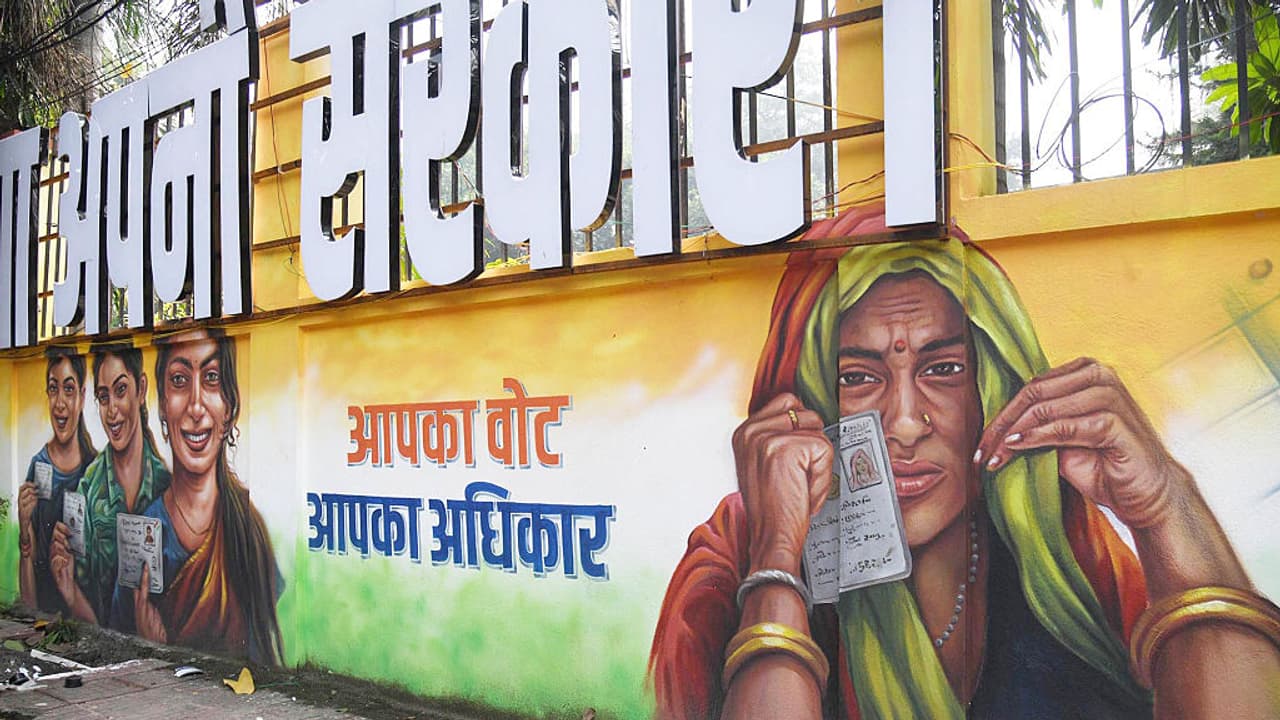Bihar’s assembly election begins with 3.75 crore voters deciding fate of 1,314 candidates across 121 constituencies. Key contestants include Tejashwi Yadav, Deputy CM Samrat Choudhary and others. Voting will take place across 45,341 polling stations
Bihar is set for the first phase of its crucial assembly elections on Thursday, with nearly 3.75 crore registered voters deciding the electoral fate of 1,314 candidates. This phase will cover 121 constituencies spread across 18 districts. The Election Commission has set up 45,341 polling stations, out of which 36,733 are located in rural areas.
According to the Election Commission, there are 10.72 lakh new voters this time, while 7.38 lakh voters are between 18 and 19 years old. The total population in these constituencies is 6.60 crore, meaning almost three crore people are not eligible to vote yet due to age or other reasons.
Big names in the first phase
The first phase includes contests featuring some of Bihar’s most well-known political leaders. Among them are Deputy Chief Minister Samrat Choudhary from the BJP, INDIA bloc’s chief ministerial face Tejashwi Yadav from the RJD, and several senior ministers in the Nitish Kumar-led government.
Tejashwi Yadav will fight to retain his Raghopur seat, hoping for a third consecutive win. His main opponent, Satish Kumar of the BJP, had earlier defeated Tejashwi’s mother, former CM Rabri Devi, in 2010 when he contested on a JD(U) ticket.
Tejashwi’s challenger this time also includes Chanchal Singh from Prashant Kishor’s Jan Suraaj Party. Kishor himself had earlier said he would contest against Tejashwi but later withdrew, fielding Singh instead.
Family rivalry and local battles
In Mahua, Tejashwi’s elder brother Tej Pratap Yadav, who now leads his own Janshakti Janata Dal, faces a tough multi-cornered fight. His main rival is sitting RJD MLA Mukesh Raushan. Sanjay Singh of the Lok Janshakti Party (Ram Vilas) and independent candidate Ashma Parveen, who was the runner-up in 2020, make the contest even more interesting.
Deputy CM Samrat Choudhary is contesting from Tarapur after nearly a decade of not fighting a direct election. He faces RJD’s Arun Kumar Sah, who lost the same seat by just 5,000 votes in 2020. Choudhary’s win would further strengthen his position within the BJP.
Similarly, BJP minister Mangal Pandey is contesting from Siwan for the first time, facing senior RJD leader Awadh Bihari Chaudhary, a multiple-term MLA and former Speaker of the Assembly.
Political dynasties and new entrants
The Raghunathpur constituency is drawing attention due to Osama Shahab, the son of late gangster-turned-politician Mohammad Shahabuddin, who was once known as the “uncrowned king” of Siwan. His entry has been criticised by the NDA, with BJP leaders calling it a sign of the RJD’s “return to jungle raj.”
The first phase also features celebrity candidates, adding a dose of glamour to the polls. Folk singer Maithili Thakur is contesting from Aliganj as a BJP candidate, while Bhojpuri film stars Khesari Lal Yadav (RJD-Chhapra) and Ritesh Pandey (Jan Suraaj Party-Kargahar) are also in the fray.
Ministers in the fray
A dozen ministers from the current Nitish Kumar government are contesting in this phase. From the BJP, key ministers include:
- Nitin Nabin (Bankipur)
- Sanjay Saraogi (Darbhanga)
- Jibesh Kumar (Jale)
- Kedar Prasad Gupta (Kurhani)
From JD(U), the main ministers contesting are Shrawan Kumar (Nalanda) and Vijay Kumar Chaudhary (Sarairanjan).
Deputy CM Vijay Kumar Sinha is contesting from Lakhisarai, seeking a fourth consecutive victory against Amresh Kumar of the Congress and Suraj Kumar of the Jan Suraaj Party.
High-profile and controversial constituencies
One of the most-watched contests is in Mokama, where JD(U)’s Anant Singh, currently in jail over the killing of a Jan Suraaj Party worker, faces RJD’s Veena Devi. Veena Devi is married to Suraj Bhan, a former MP with a controversial past, making the contest one of the most talked-about in this phase.
Interesting facts and numbers
Among the 121 seats going to polls, Digha in Patna district has the highest number of voters — around 4.58 lakh — while Barbigha in Sheikhpura has the fewest, at 2.32 lakh. Kurhani and Muzaffarpur constituencies have the largest number of candidates (20 each), while Bhorey, Alauli and Parbatta have only five candidates each.
The Election Commission said that voter lists have been revised under the Special Intensive Revision (SIR) process, reducing the state’s total voter count to 7.24 crore, about 60 lakh less than before the revision.
A test for alliances
The first phase of the Bihar polls is a major test for both the ruling NDA and the opposition INDIA bloc. For the NDA, led by the BJP and JD(U), this phase will show how voters respond to the Nitish Kumar government’s performance and the leadership of the two deputy chief ministers, Samrat Choudhary and Vijay Sinha.
For the opposition, led by the RJD and Congress under the INDIA bloc, the elections will test whether Tejashwi Yadav’s campaign for jobs and development can attract enough support to challenge the ruling alliance.
As Bihar heads to the polls, the contests reflect the state’s complex mix of tradition, caste, and charisma. With established politicians, debutants, and even film stars in the fray, the first phase is expected to set the tone for the rest of the multi-phase election.
(With inputs from agencies)
